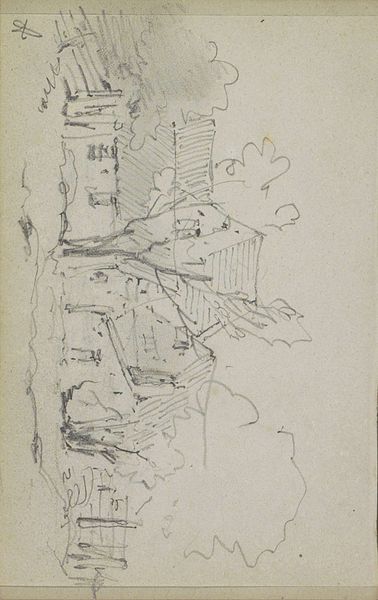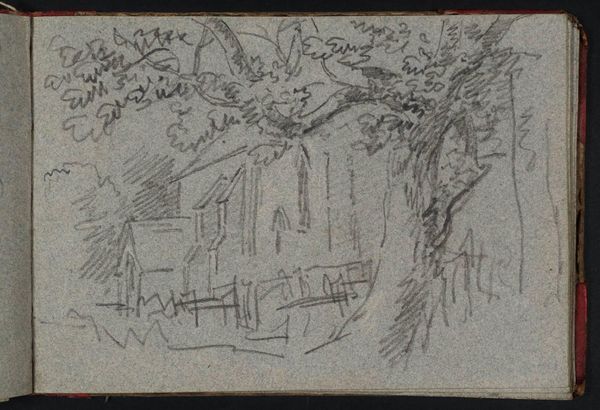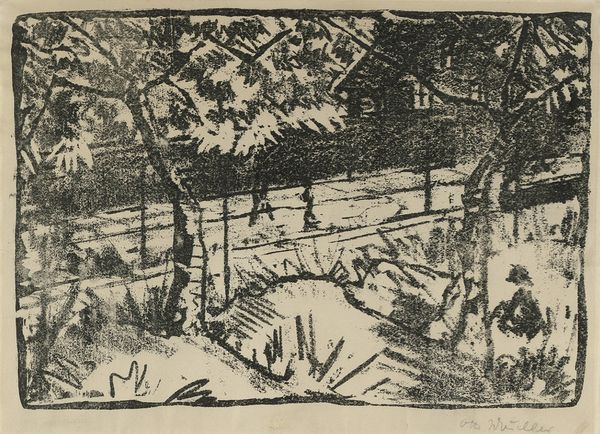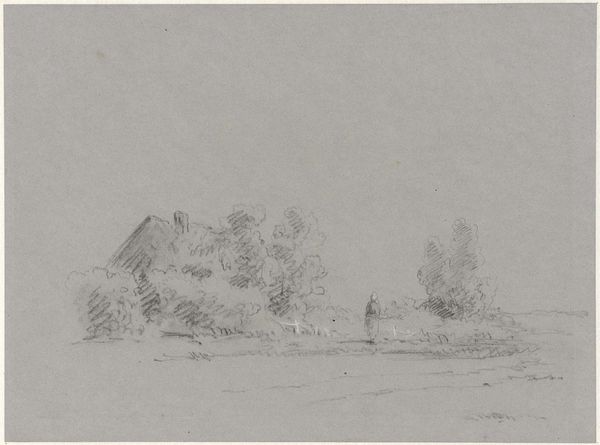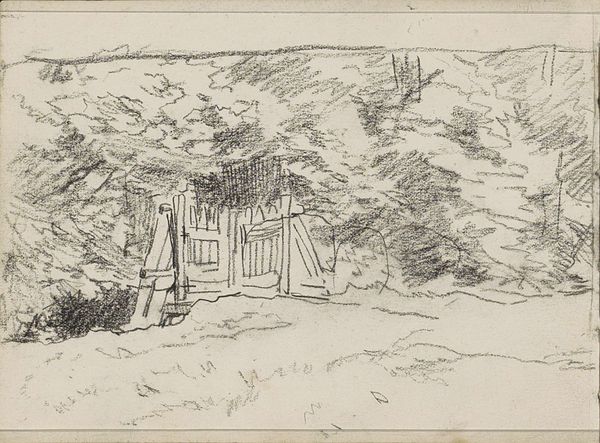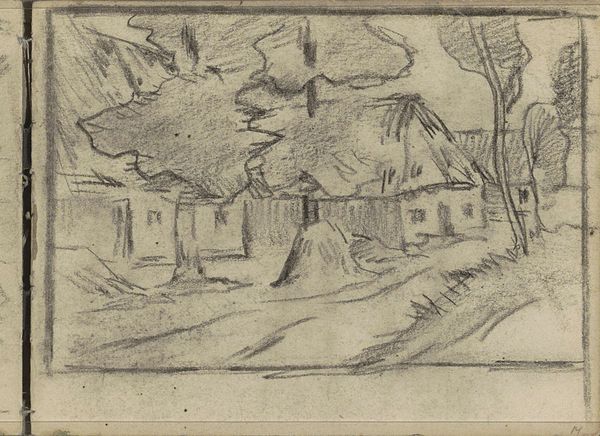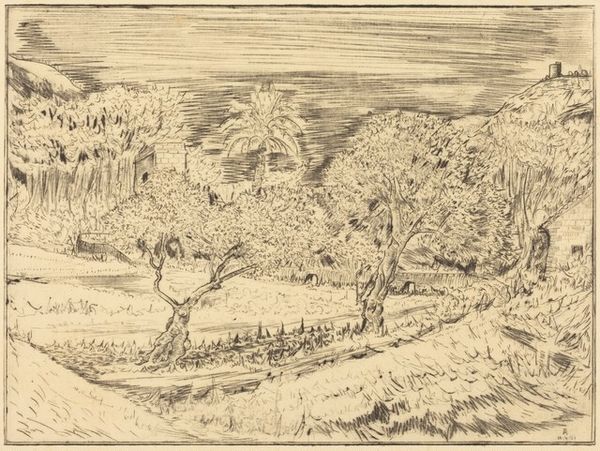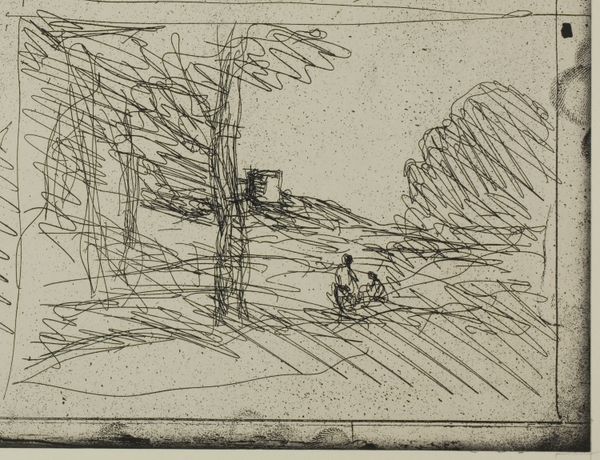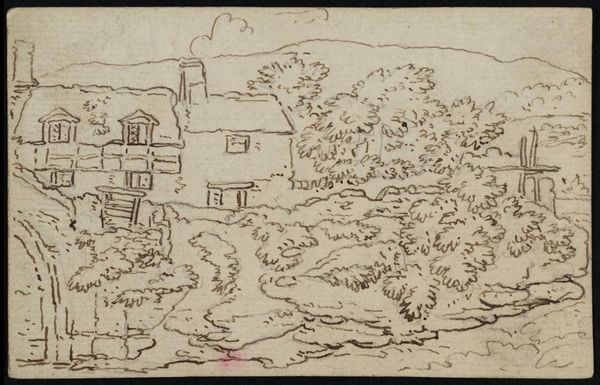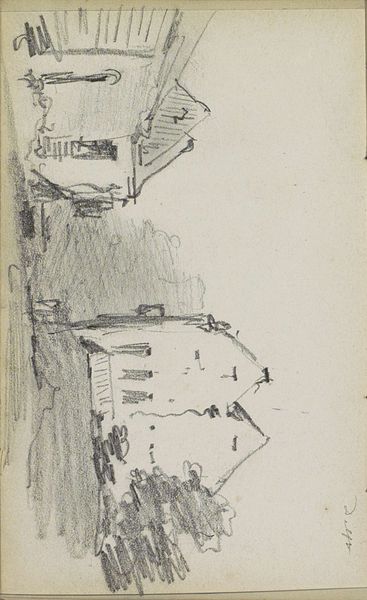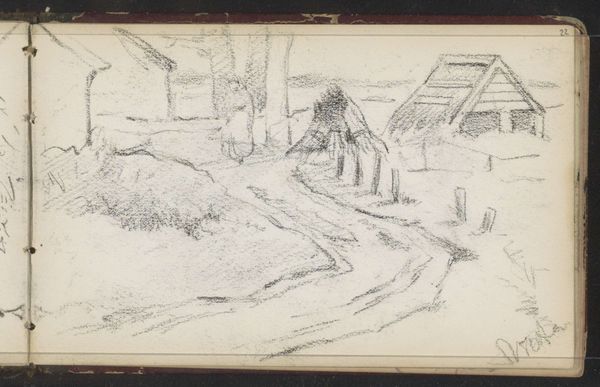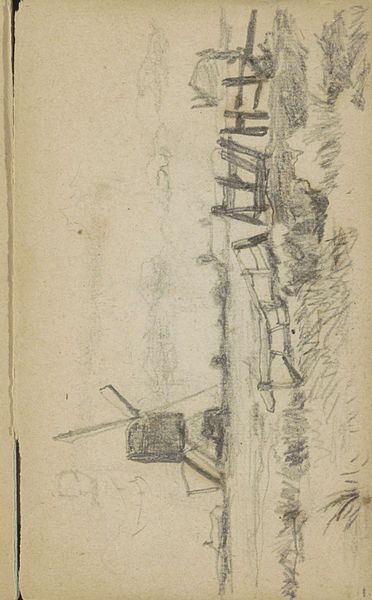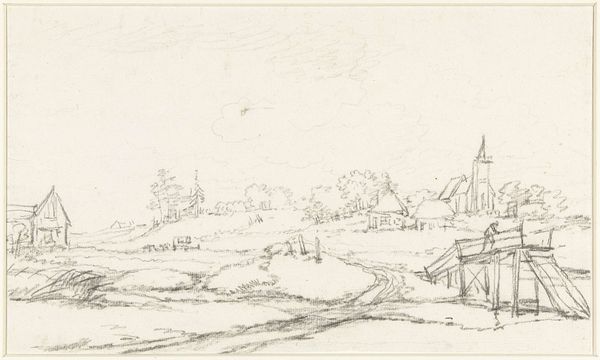
drawing, pencil, architecture
#
drawing
#
ink drawing
#
landscape
#
pencil
#
expressionism
#
architecture
Copyright: Public domain
Curator: Here we have Nicholas Roerich's "Jalnik," a pencil and ink drawing created in 1915. What's your initial take? Editor: It feels stark, almost haunting. The greyscale palette and skeletal trees create a rather bleak atmosphere. Curator: It’s interesting you say that, because Roerich’s work often carries deep spiritual and cultural weight. "Jalnik," in particular, might reference a site of spiritual significance within a specific community or historical context in Russia. How do you perceive the relationship between the structure and its surroundings? Editor: The small building—presumably the “Jalnik”—appears almost dwarfed by the landscape, a lone structure amidst what looks like quite rough terrain. The mark-making is coarse and gestural. Given it's just pencil and ink, there’s a raw, immediate quality to it. I’m drawn to how Roerich employs basic materials to express such a heavy mood. It begs the question of whether that simplicity is a reflection of the access to materials, a specific intention or whether both are the case? Curator: Absolutely. And given the era, 1915, we need to consider the backdrop of World War I and the social upheaval happening in Russia. Roerich's personal spiritualism intertwined with broader anxieties about modernity and the fragility of cultural heritage. His interest in folk culture and pre-Christian beliefs can also offer clues. Do you see that reflected in the image’s material makeup? Editor: To some extent. Perhaps that almost clumsy feel echoes the anxieties, but also the sense of a raw landscape stripped down. The limited medium creates an intense focus on textures – the grain of the wood of the Jalnik and the scratch of the tree trunks. They speak to the hand that made this and the inherent physicality of place and object. Curator: Indeed. Thinking about its place historically, “Jalnik” captures a moment of significant transformation in Russia. Its creation speaks to tensions between tradition and modernity, spirituality and materialism. Editor: It is a simple thing made powerfully evocative with readily available, economic media and in a very short time period, suggesting its immediacy in the mind of the artist as something worth capturing, worth noting down in time. Curator: I find myself appreciating, thanks to your perspective, its commentary on a nation's journey told through very modest materiality and expression. Editor: And I can better appreciate that modest act given it might very well represent someone using limited tools and knowledge, to tell the tale of something much larger happening around them.
Comments
No comments
Be the first to comment and join the conversation on the ultimate creative platform.
